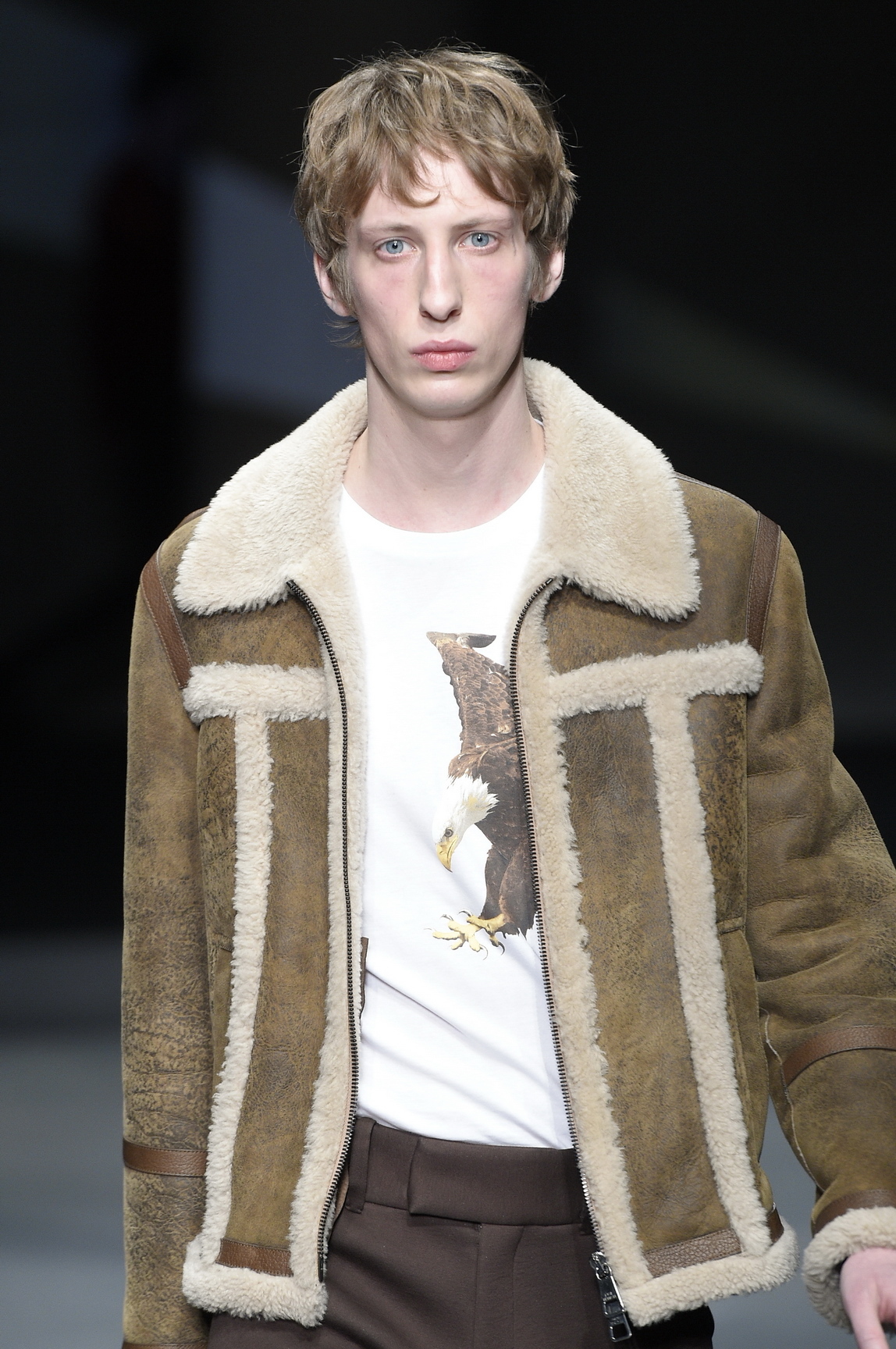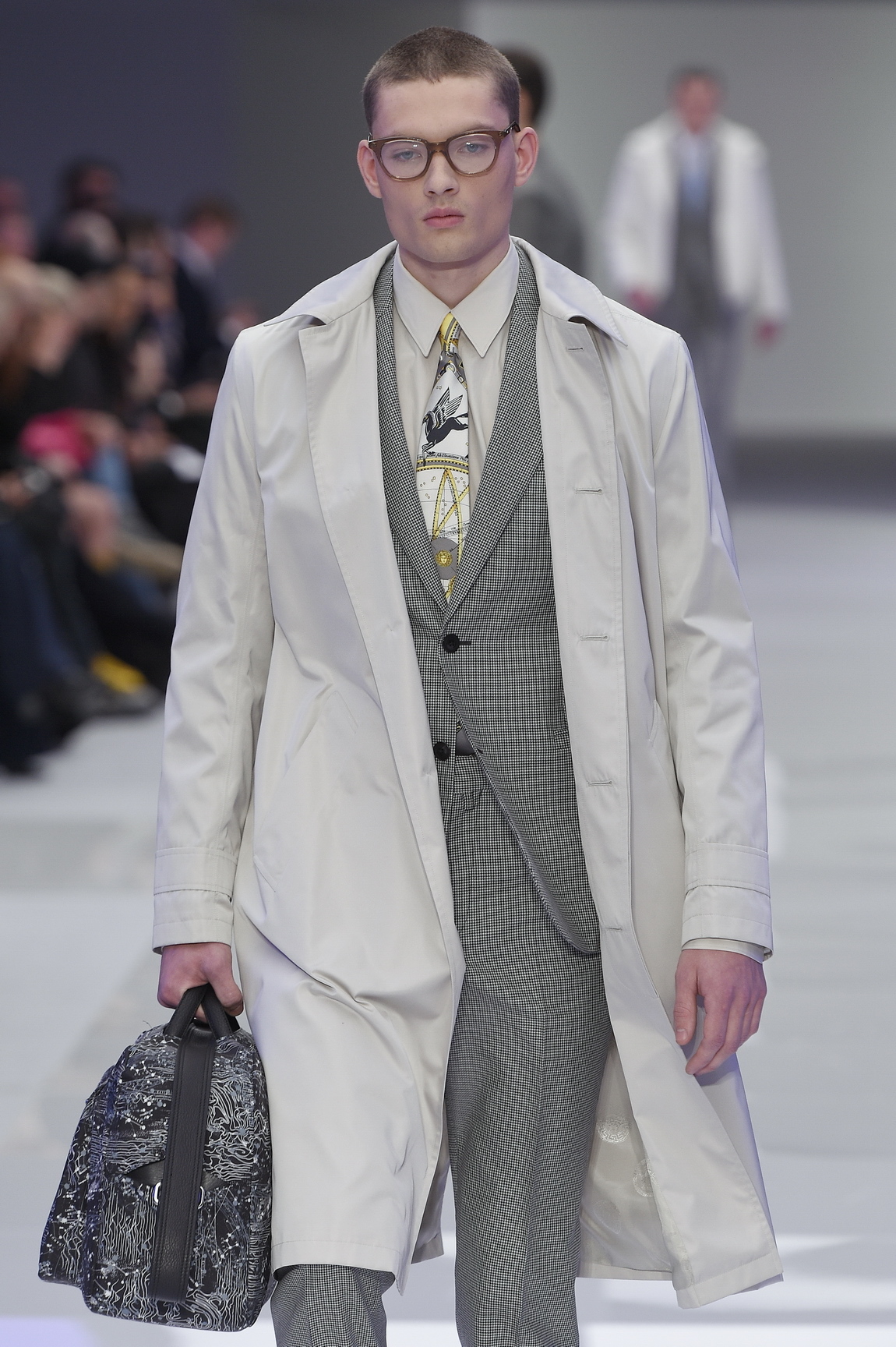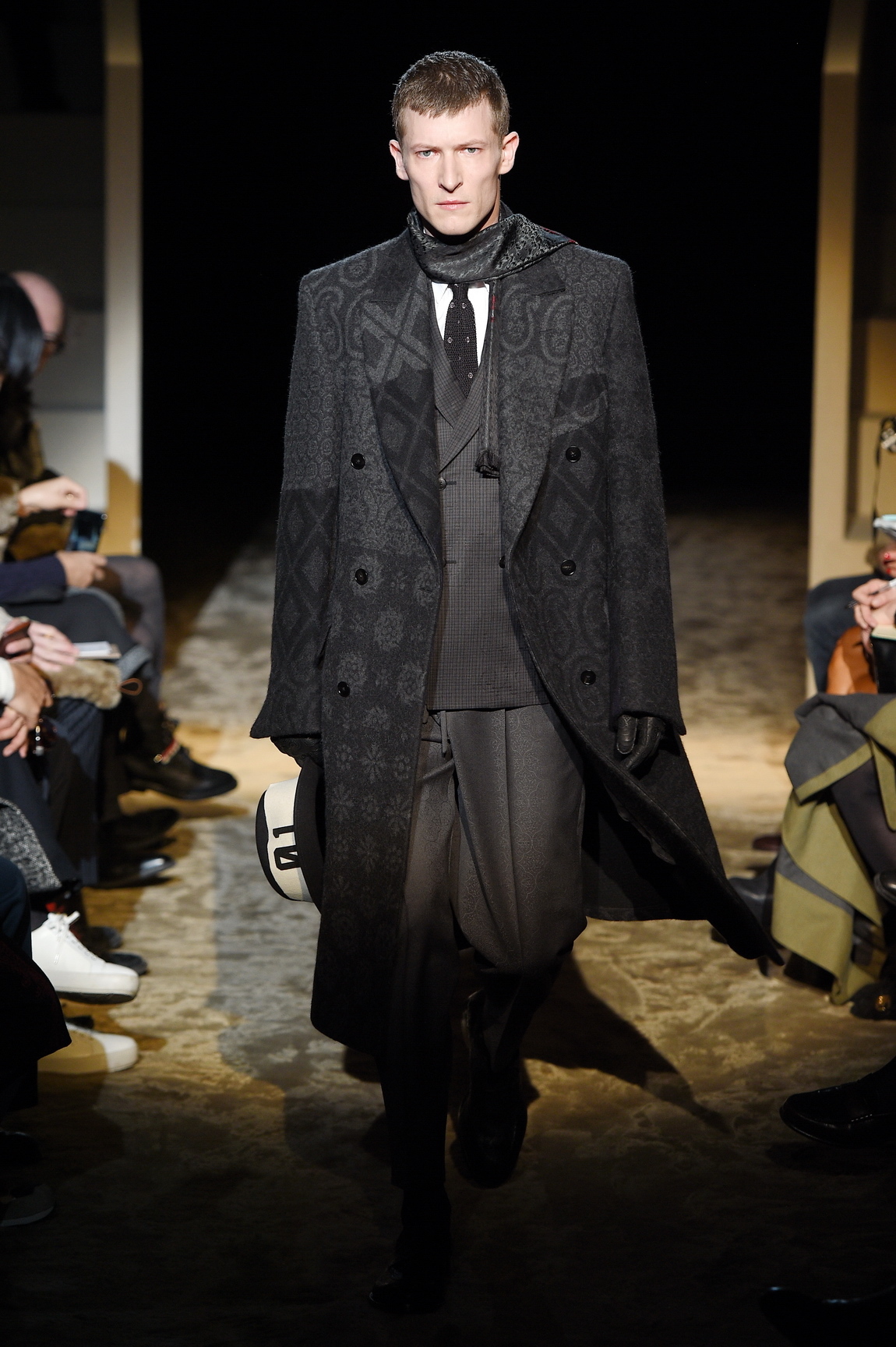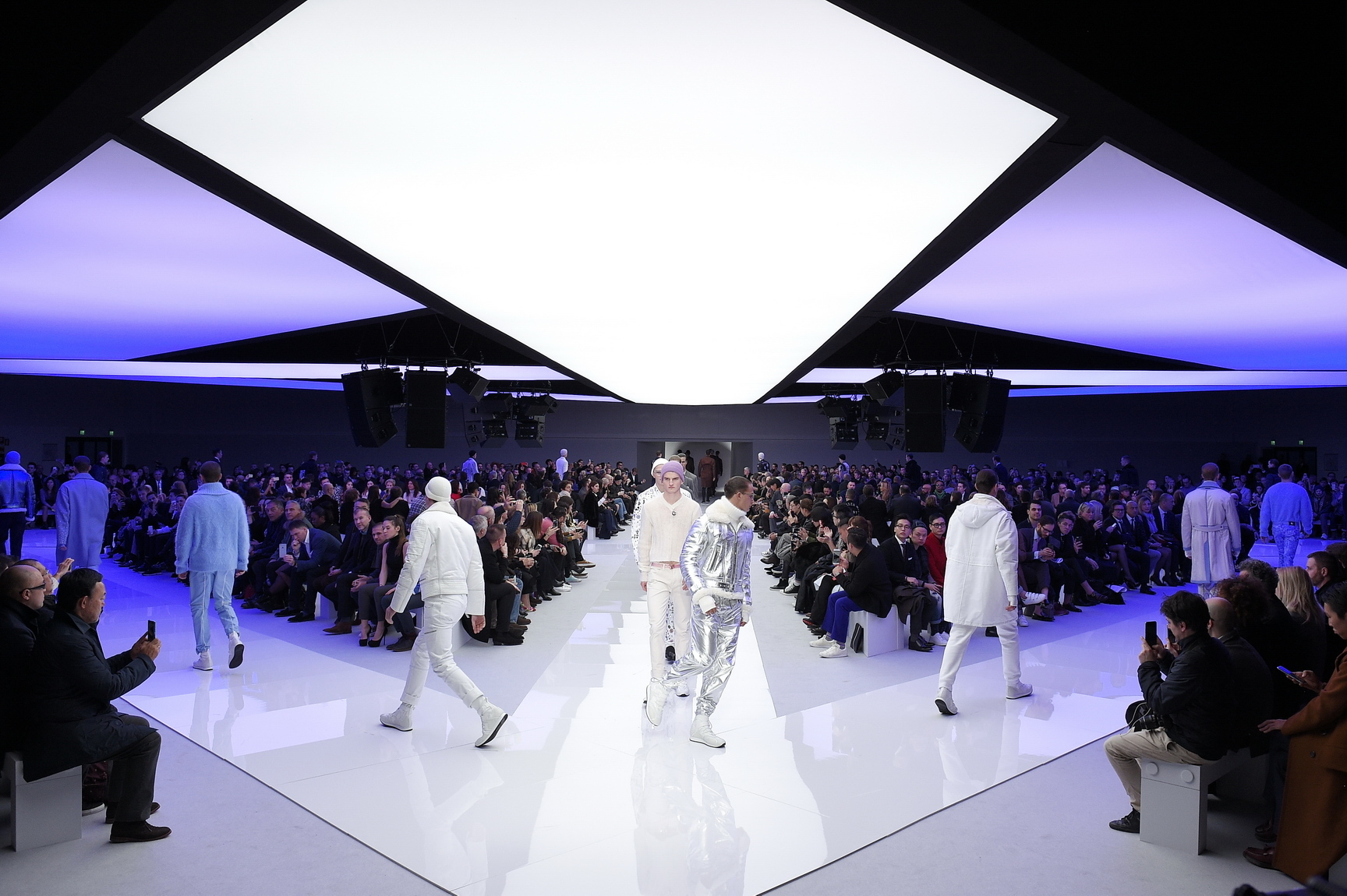The balance between preservation and innovation is a hot topic at the Milan men’s shows this week. Should designers and their aging houses faithfully draw on the aesthetics that first took those houses to the top, or should they wipe clean the slate and march on into unknown territory? Few would agree equivocally with either of those proposals, but in the sexy, swanky, sumptuous niche that is Italian fashion it would be heresy for a designer to disregard the heritage of a brand, no matter when it was founded. Aesthetics will cross over brands between here in Milan and collections will look similar—this is Italy. That’s okay. They have a certain style. But that doesn’t mean you can’t challenge the heritage. “I think having a London upbringing and design idea and bringing it to Milan is hopefully what it takes to create a contemporary collection,” James Long said at his first show for Iceberg, the pop arty sportswear brand founded by Jean Charles de Castelbajac in the 70s on behalf of the Gerani family, who still owns it today. “It’s amazing to have the freedom to go for it,” Long noted.

Was his mission successful? It was, in a way that seemed to effortlessly balance the past and the present to the point where the younger editors in the room would say “that coat is so Iceberg” and follow it up with “I really want it.” Instant gratification gets show-goers ever so excited, because there’s no better barometer for the relevance of fashion than people immediately wanting to wear it. Long achieved that effect by working with the outdoorsy, urban pieces that are always part of his own collections back in London, but adding an Italian sense of pop fused with familiar nods to retro. “It’s Italo pop meets Brit pop,” he said of the section of the collection that used de Castelbajac’s classic Mickey Mouse motif. “There’s a lot of the family’s personal pop art that I’ve referenced.” What felt most new were the accessories: a Wonder Woman tiara for boys, anyone? It sounds ridiculous, but through Long’s Iceberg lens it made total sense. It was fun and subversive in that London way the fashion industry depends on in order to push forward, and fun and commercial in that Milan way we depend upon just as much.

“Some people inspire me to push me on and do something different. So I said, how can I do something I don’t normally do?” Neil Barrett explained after his show, which was his most personal to date. Looking back at his teenage years in Devon — and interweaving those memories with a David Bowie interview from Barrett’s teenage years in the 70s on the sound system, followed by an Air remix of “A Better Future” — the designer used his expertise in garment construction to reinvent pieces from his past. “I referenced my own pieces, my father’s, my brother’s, my uncle’s, and the ones I couldn’t have that my friends had that I would desire to have.” It was literally as close as you come to finding that balance between old a new, because as we all know there can be no future without an understanding of the past—your own included. Barrett’s collection was British: shearling jackets and check jackets emblazoned with his signature modernist graphics, eagle prints from photos taken in Dartmoor, and a 70s vibe about it all, which — through fashion’s persistent love of it these days — is starting to feel as contemporary as it probably did back then.

Donatella Versace couldn’t have foreseen the death of David Bowie, nor could she have produced a collection to honor his obsession with astronomy and outer space in just five days. Nonetheless, that’s what her futuristic new menswear direction felt like, complete with a spaceship-like venue change and Bowie’s “ground control to Major Tom” line from “Space Oddity” fanfaring the finale. Bowie’s idea of space was founded in the Space Age of the 60s, an analogue futurism perhaps best illustrated in the art direction of Stanley Kubrick’s 2001: A Space Odyssey from 1968, and in that sense there was nothing futuristic about Versace’s collection of silver tracksuits, powder blue suits, and spacesuit-like embellishment on jackets—not seen with contemporary eyes, anyway. What was futuristic, or indeed innovative to use a big word, was her fearlessness. The Versace matriarch’s respect for her late brother’s house is now expressed in a desire to keep it as relevant as possible, with all the LED-lit models jogging through the runway it takes (they opened the show; see YouTube for more).

Unapologetic opulence is already a big thing in Milan this season, and Versace’s take on it was terrific. Rather than majestic and louche, hers was animated and sporty. She took the elements of spacesuits and spaces stations and turned them into her futuristic take on majestic embellishment, like the Space Age version of bejeweled Renaissance court attire. She wasn’t in the mood for backstage interviews this season, but word had it her message was environmental—cleaning up Earth by finding a new planet to inhabit? Perhaps she’d been watching The Martian. Who knows if Versace’s idea of a balance between heritage and future pleased those eternally eager for the new. At least she’s not boring. Neither, by the way, is Stefano Pilati, who showed his best-ever collection for Ermenegildo Zegna. Talk about unapologetic opulence—this was the ‘couture’ kind, as they like to call it there, so sparkly and ravishing and entrancing that frankly, who cares how new it felt? Crown motifs woven into coats and gigantic jewels on turtlenecks. It was fabulous. The only thing that would make it better? Put it into production. That’s the real innovation that needs to happen in fashion.

Credits
Text Anders Christian Madsen
Photography Mitchell Sams
